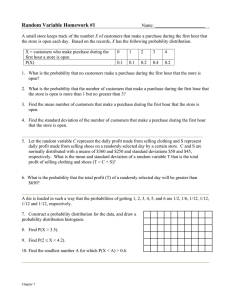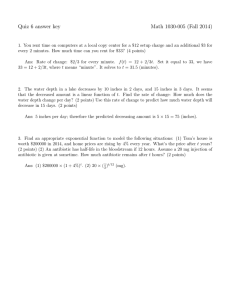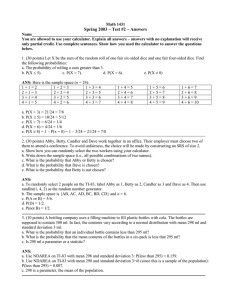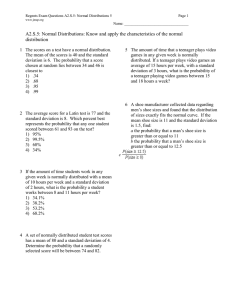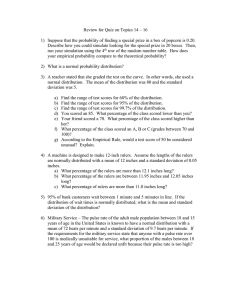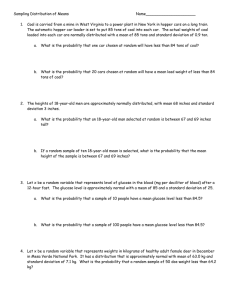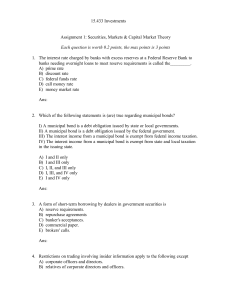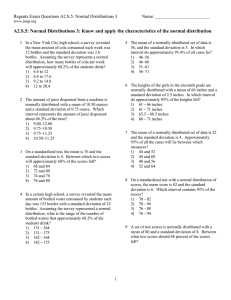Using the Empirical Rule for Normal Distributions
advertisement
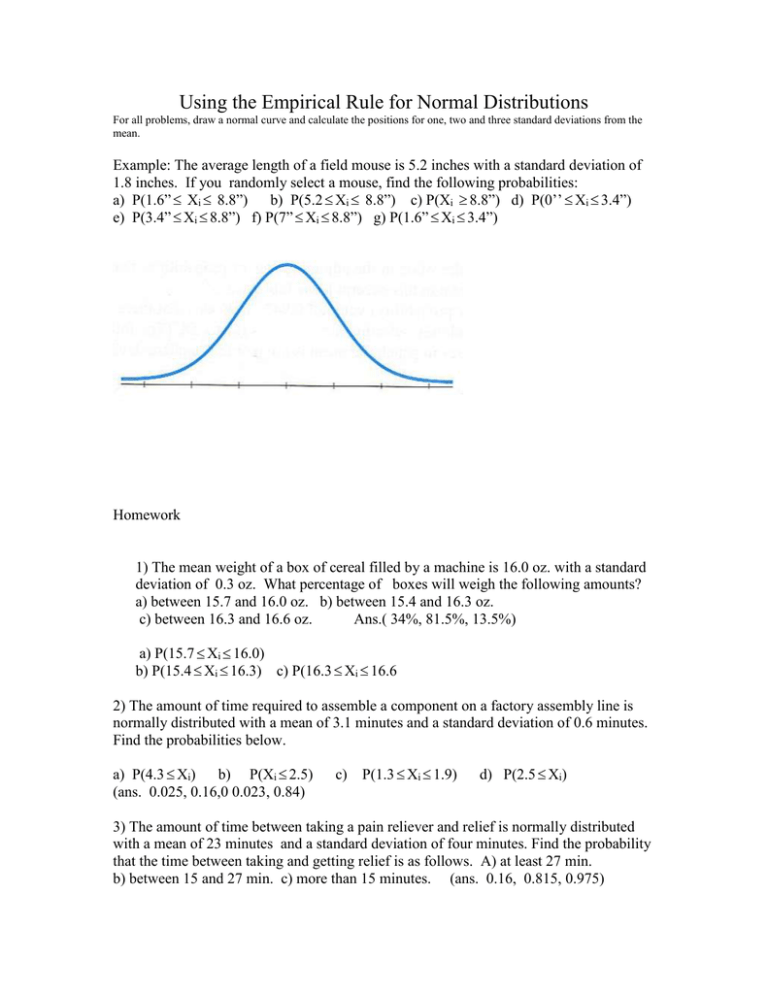
Using the Empirical Rule for Normal Distributions For all problems, draw a normal curve and calculate the positions for one, two and three standard deviations from the mean. Example: The average length of a field mouse is 5.2 inches with a standard deviation of 1.8 inches. If you randomly select a mouse, find the following probabilities: a) P(1.6” Xi 8.8”) b) P(5.2 Xi 8.8”) c) P(Xi 8.8”) d) P(0’’ Xi 3.4”) e) P(3.4” Xi 8.8”) f) P(7” Xi 8.8”) g) P(1.6” Xi 3.4”) Homework 1) The mean weight of a box of cereal filled by a machine is 16.0 oz. with a standard deviation of 0.3 oz. What percentage of boxes will weigh the following amounts? a) between 15.7 and 16.0 oz. b) between 15.4 and 16.3 oz. c) between 16.3 and 16.6 oz. Ans.( 34%, 81.5%, 13.5%) a) P(15.7 Xi 16.0) b) P(15.4 Xi 16.3) c) P(16.3 Xi 16.6 2) The amount of time required to assemble a component on a factory assembly line is normally distributed with a mean of 3.1 minutes and a standard deviation of 0.6 minutes. Find the probabilities below. a) P(4.3 Xi) b) P(Xi 2.5) (ans. 0.025, 0.16,0 0.023, 0.84) c) P(1.3 Xi 1.9) d) P(2.5 Xi) 3) The amount of time between taking a pain reliever and relief is normally distributed with a mean of 23 minutes and a standard deviation of four minutes. Find the probability that the time between taking and getting relief is as follows. A) at least 27 min. b) between 15 and 27 min. c) more than 15 minutes. (ans. 0.16, 0.815, 0.975)




